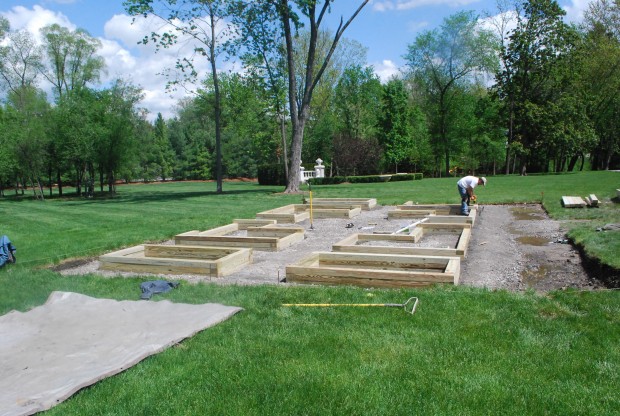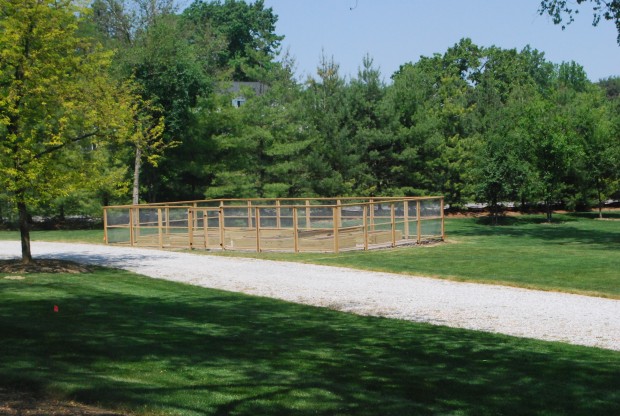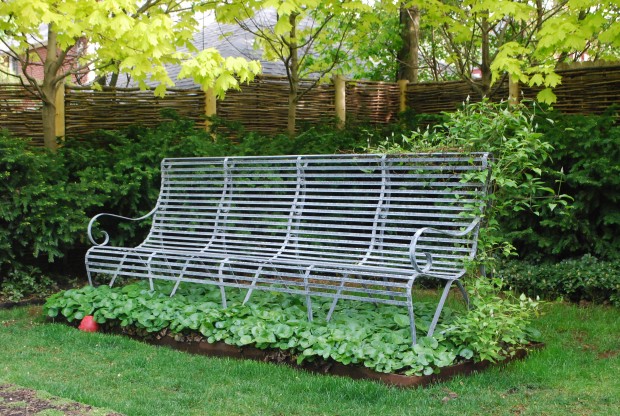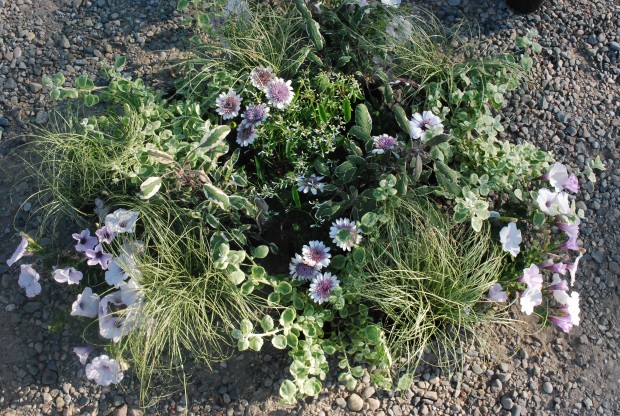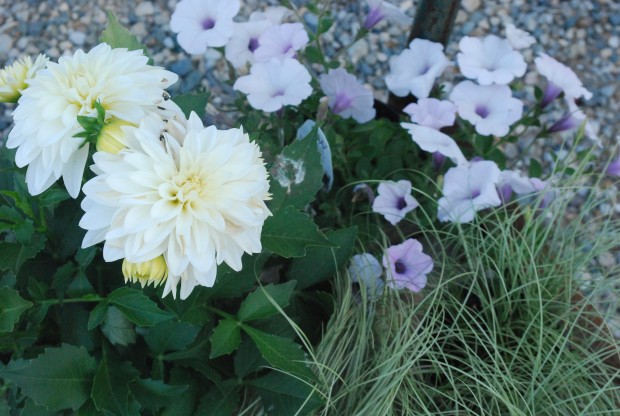Every now and then I have a call for a formal vegetable garden. By this I mean a garden with a formal layout and structure. These clients wanted raised beds for their vegetables for several reasons. They liked the idea that they could tend the garden easily. They liked the idea that the soil mix would be especially tailored for growing vegetables. They have children; their lives very much revolve around the dinner table. They have strong ideas about good food, and where it comes from. Their soil is very heavy clay, and the site chosen for the garden does not drain particularly well. I designed the garden, and laid it out with stakes and strings for them to see.
Once they approved the plan, we stripped away the existing sod. We excavated the area, as the garden would have a decomposed granite floor. This is a great surface on which to push a wheelbarrow. It is a surface that requires little to no maintenance.
Steve and his crew built the boxes on site. Several courses of lumber were installed below grade, and set level. When the garden is finished, we will reconfigure the edge of the driveway to run parallel to it. There will be some regrading involved as well. But at this point in the project, we are a long ways away from the finishing touches.
A 3″ base of 22AA road gravel levelled the floor of the garden. The sloping lawn will be regraded to meet the finished floor of the garden. The poor drainage became very clear after a rain! The raised beds will insure that water drains away speedily. Vegetables attract no end of disease and insects. A clean growing, well draining site is a good natural defense against trouble.
Once the bases of all of the boxes took shape, it was easier to see the overall plan. Four boxes were simple rectangles. The four center boxes were L-shaped. A three tiered theatre for the center will hold pots of herbs, and culinary flowers. At this point in the construction, we were going over lists of vegetables and herbs. Like most families, they have vegetables that appear on their dinner table frequently. Others-not so much.
Steve is an expert with soil. He spent 16 years as superintendent of grounds at Grand Hotel, on Mackinac Island. The island has very little in the way of soil. A thin layer of compost covers layers of big rocks, and little rocks. The cost of transporting soil from the mainland was considerable. He composted thousands of yards of soil for their 165 acres of golf courses, employee housing, and hotel grounds. He knows how to cook up great soil.
This soil is compost of his own making, to which he added sand, and lots of worm castings. It is rich, and friable. The the idea of worm castings raises eyebrows, but vegetables thrive in it. Decomposed organic matter is an essential element of good soil.
Each box has its own drip irrigation lines. Water from drip hoses does not migrate very far away from the hose. The drip is so so slow that the water sinks straight down-gravity, this. Thus there is a need for multiple drip hoses, so the plants are evenly watered. A drip irrigation system is not perfect. A person needs to be in charge. A person who can pick up a hose, if there is a need. This spigot was run off the irrigation system.
My client has 7 acres of property. This means they have all manner of wildlife. Deer, raccoons, mice, rabbits and woodchucks, just for starters. The garden had to be fenced. The mainstay of this fence is a very sturdy galvanized steel mesh. A vegetable garden has to be sited and planted to take advantage of the sun. A privacy fence might shade the garden. The steel mesh does not impede the sunlight.
Each panel of steel mesh is enclosed in a cedar frame. A horizontal bar of cedar midway up the panel adds a good bit of reinforcement to the mesh. As much as you love your home grown vegetables, all of God’s creatures love them too. This fence says keep out in a very simple way.
The fence is 6 feet tall. The 6 feet wide gates are just 3/4 of an inch shorter, to permit the gates to be opened wide. The decomposed granite finished floor has yet to be installed. A second short round of steel mesh will be buried below grade. This will deter the crafty diggers and the little creatures.
We are a ways from the finish here. The tomato towers and herb theatre will be done shortly. 7 espaliered fruit trees are yet to be planted. The drive needs to be reconfigured. A cutting garden will be planted ouside the fence on the gate side. Roses for cutting will be planted on the far side. As for the planting of the vegetables and herbs-Steve is in charge of that part.
This is a big garden. Not like a field of corn in Iowa, or a grove of cherry trees. This is by no means a farm. But it is as big a garden as they will ever need. It is a working garden. Sturdy, simple, plain-and organized. I hope within a few weeks it will be a good looking working garden.




